Product summary
CNET Editors' ChoiceJul 09
The good: Getting around 50 mpg on average, the 2010 Toyota Prius is a stellar car for fuel economy, and you can choose accelerator sensitivity. Traffic reports are integrated with the navigation system.
The bad: The Prius isn't designed for handling. There isn't full iPod or USB drive integration for the stereo. The DVD-based navigation system reacts slowly.
The bottom line: The 2010 Toyota Prius is a better car than its predecessor, although there are some areas, especially in the cabin, where we would have liked to see more improvement.
Specifications: Body style: Sedan ; Available Engine: Hybrid
CNET editors' review
* Reviewed by:
Wayne Cunningham
* Reviewed on: 07/07/2009
After the success of its predecessor, the advent of the 2010 Toyota Prius created a lot of expectations. But instead of incorporating sought-after features such as a lithium ion battery pack or plug-in capability, Toyota opted for incremental changes, tweaking the power train to get more power and better fuel economy..jpg)
On the cabin tech side, we expected big advances, as competitors have stepped up the game with such options as external data sources, which provide useful location information, and better compatibility with electronic devices. In this area, the 2010 Prius takes a few steps forward, but not as many as we hoped.
The new Prius model can be had in four trim levels, which Toyota dubs II, III, IV, and V, apparently preferring simple Roman numerals to arcane combinations of S, E, and L. Our test model was the Prius IV, which included navigation, upgraded JBL audio system, Bluetooth phone system, a back-up camera, and, most interestingly, the solar-roof option..jpg)
From the outside, the 2010 Prius shows some subtle, but smart, body changes. When spotting the new Prius in the wild, you will want to look for the notched back, a horizontal rear crease that lets the hatchback lip stretch out a little, creating a spoiler effect. Less obvious will be the roofline change, which moves the peak back a few inches for better aero efficiency and to add a little headroom for rear passengers.
Looking inside, Toyota adopted the floating console that Volvo started using a few years ago, creating an airy feeling in the cabin and a little storage space. Strangely, Toyota chose to put the Prius' seat heater controls in that open space, so you'll have to reach down in cold weather. Otherwise, the dashboard is still bare of analog gauges, retaining the monochrome digital strip just below the windshield. The steering wheel has a slightly flattened bottom, something more commonly seen on sports cars..jpg)
Hybrid driving
As with the previous version, the 2010 Prius starts out under electric power, creeping forward silently at low speeds and with light acceleration. And light acceleration is all you get with even half throttle applied--the Prius doesn't feel like it wants to move at all, which is one way to save gas. It takes almost full pressure on the accelerator to feel some pull from the front wheel drive, but that also takes the Prius out of electric drive. We found a constant tension while driving the 2010 Prius between playing the maximum mileage game and actually trying to get to a destination.
Initial acceleration may be unsatisfying, but Toyota gave Prius drivers options with the 2010 model in the form of three buttons labeled EV, Eco, and Power. While driving city streets, we tried the EV button, a program designed to maximize the use of the electric drive. The first time, a message on the car's display said our speed, 27 mph, was too high. The second time we tried it, a similar message gave the excuse that the battery was too low. We wondered if the car would cite a headache as the next excuse.
As we expect, Eco mode makes that slow acceleration even worse. But Power mode is tolerable. These modes are merely throttle programs, so a light touch on the accelerator when in Power mode can still produce good mileage. Although we enjoy getting the Prius moving under electric power, in the real world, we found it necessary to stab the accelerator to get moving from a stoplight, engaging both gas engine and electric motor and working towards the peak hybrid system's 134 horsepower. Once up to speed, easing back on the accelerator lets the Prius cruise at speeds of 25 to 30 mph under electric power.
Traffic conditions
Before getting on the freeway, the navigation system shows us the traffic conditions, a new feature for the 2010 Prius. But this unit is still DVD-based, and searching through the points-of-interest database to find a destination takes some lengthy pauses to retrieve information. New, nice-looking graphics indicate the different means of destination entry through the touch-screen LCD, but most of these are locked out while under way.
However, the voice command system does an excellent job of recognizing our inputs, and offers feedback on the LCD showing which commands are available at each step. With route guidance active, the navigation system shows familiar graphics mapping out upcoming turns and which lanes to be in for freeway junctions. We also discover another new feature for the Prius' navigation: it does text-to-speech, reading out the names of streets.
While driving on city streets, we noticed the new Prius still had the wobbly feeling in turns from which its predecessor suffered. On the freeway, the Prius wanders in its lane as wind buffets it around. The steering feels solid, making it easy to control, but it doesn't have that stable road feeling offered by similar midsize cars.
At freeway speeds, we fight to keep the instantaneous fuel economy gauge above 50 mpg while maintaining reasonable freeway speeds of 65 to 70 mph. Toyota has migrated its various power and fuel economy displays to the monochrome instrument screen, from their former placement on the LCD. Although not as graphically rich, it's safer. We find ourselves settling on the Eco screen, which uses a horizontal bar to show how much throttle we are applying.
The Eco screen shows our average fuel economy, but doesn't show range to empty. We have to dig through a few other screens to find that information. You can't get average fuel economy and range to empty on the same screen--an annoyance. These screens are informative, and let you maximize mileage, but they are a far cry from the hybrid instrument display Ford uses in the Mercury Milan Hybrid.
Tech tricks
Another instrument display feature in the new Prius is a graphic that mimics the steering wheel buttons when you press them; the idea being that you don't have to look down at the wheel when you press a button, keeping your eyes closer to a front view. In concept it's pretty cool, but in practice we find it unnecessary. After a few minutes of driving, we remember the button positioning, and don't bother to look at the instrument display feedback.
The freeway is a good spot to listen to the stereo characteristics. We were disappointed on getting into the 2010 Prius to find no iPod port, but Toyota built in stereo Bluetooth support for MP3 players. And, as luck would have it, the new OS for the iPhone includes stereo Bluetooth. We paired an iPhone to the car's Bluetooth phone system when we first got in, and were happy to see the car ingested the phone's contact list as well.
But using the iPhone as a music player meant we had to pair it again, this time to the stereo. You can't use the iPhone for music and phone at the same time with the 2010 Prius. We thought this lack of integration would be a real problem, but switching from Bluetooth music player to Bluetooth phone proves fairly easy, merely requiring a touch on the car's onscreen connect button. Still, if you were to get a call while using the phone as a music player, it wouldn't switch to the car's hands-free system. Also, the Bluetooth audio source screen in the car doesn't show what music is playing and offers no music browsing capability. You only get a play and a pause button. Toyota really should have put in true iPod support.
With the navigation option in our car, the disc changer goes from six slots to four, and is hidden behind the LCD. This arrangement is the same as is in the previous Prius model, and we would have expected some improvement here. That disc changer can, of course, read MP3 CDs. There is also satellite radio and a simple auxiliary input.
Our car includes the upgraded, eight-speaker JBL audio system, which sounds surprisingly good, especially considering what we are used to hearing in Toyota cars. Although lacking a subwoofer, this system puts out bass strong enough to feel, yet still retains well-modulated highs and mids. Instrument definition is good, making the different layers in a recording distinct. This is an above average audio system.
Proceeding along our route, the navigation system pipes up, warning of slow traffic ahead. It doesn't offer a detour, but looking at the map, we see the freeway marked in yellow, indicating speeds of 20 to 40 mph. This navigation system is supposed to find a route around any red sections, which would mean traffic moving under 20 mph.
The art of braking
As in the previous model, using the brakes is an art in the 2010 Prius. Hit them too hard, and you use the actual pads and calipers. The trick is to anticipate stops and slow-downs and lightly apply the brakes well in advance, which uses the car's regenerative braking system only, thereby feeding the battery and saving wear and tear on the pads.
We employ this braking technique as we get off the freeway and approach our destination. Leaving the car in a parking lot on a hot day, we get to experience one of the more unique features of the Prius: the optional solar roof, which on our car powers a fan in the cabin, so when we get back to the car it's a little cooler than it would be otherwise. We also had a rearview camera on our car, but Toyota implemented a back-up beeping, similar to what you find on big trucks. This gets kind of annoying, although it's probably a pedestrian safety feature, as the Prius will usually be running under quiet electric power when it reverses.
*
2010 Toyota Prius
More on this product
review
user reviews
specifications
compare
shop
* Print
* E-mail
* Share
*
FT SD INT
[Image]
FT SD INT
* CNET editors' rating: 4.0 stars Excellent
Detailed editors' rating
Comfort: 8.0
Performance: 9.0
Design: 8.0
Overall score: 8.4 (4.0 stars)
* Average user rating: 4.0 stars out of 4 reviews
* See all user reviews
*
Product summary
CNET Editors' ChoiceJul 09
The good: Getting around 50 mpg on average, the 2010 Toyota Prius is a stellar car for fuel economy, and you can choose accelerator sensitivity. Traffic reports are integrated with the navigation system.
The bad: The Prius isn't designed for handling. There isn't full iPod or USB drive integration for the stereo. The DVD-based navigation system reacts slowly.
The bottom line: The 2010 Toyota Prius is a better car than its predecessor, although there are some areas, especially in the cabin, where we would have liked to see more improvement.
Specifications: Body style: Sedan ; Available Engine: Hybrid See full specs
CNET editors' review
* Reviewed by:
Wayne Cunningham
* Reviewed on: 07/07/2009
Photo gallery: 2010 Toyota Prius
Photo gallery:
2010 Toyota Prius
After the success of its predecessor, the advent of the 2010 Toyota Prius created a lot of expectations. But instead of incorporating sought-after features such as a lithium ion battery pack or plug-in capability, Toyota opted for incremental changes, tweaking the power train to get more power and better fuel economy.
On the cabin tech side, we expected big advances, as competitors have stepped up the game with such options as external data sources, which provide useful location information, and better compatibility with electronic devices. In this area, the 2010 Prius takes a few steps forward, but not as many as we hoped.
The new Prius model can be had in four trim levels, which Toyota dubs II, III, IV, and V, apparently preferring simple Roman numerals to arcane combinations of S, E, and L. Our test model was the Prius IV, which included navigation, upgraded JBL audio system, Bluetooth phone system, a back-up camera, and, most interestingly, the solar-roof option.
A horizontal crease in its rear gives the Prius a spoiler and lends a unique look to the tail lights.
From the outside, the 2010 Prius shows some subtle, but smart, body changes. When spotting the new Prius in the wild, you will want to look for the notched back, a horizontal rear crease that lets the hatchback lip stretch out a little, creating a spoiler effect. Less obvious will be the roofline change, which moves the peak back a few inches for better aero efficiency and to add a little headroom for rear passengers.
Looking inside, Toyota adopted the floating console that Volvo started using a few years ago, creating an airy feeling in the cabin and a little storage space. Strangely, Toyota chose to put the Prius' seat heater controls in that open space, so you'll have to reach down in cold weather. Otherwise, the dashboard is still bare of analog gauges, retaining the monochrome digital strip just below the windshield. The steering wheel has a slightly flattened bottom, something more commonly seen on sports cars.
Hybrid driving
As with the previous version, the 2010 Prius starts out under electric power, creeping forward silently at low speeds and with light acceleration. And light acceleration is all you get with even half throttle applied--the Prius doesn't feel like it wants to move at all, which is one way to save gas. It takes almost full pressure on the accelerator to feel some pull from the front wheel drive, but that also takes the Prius out of electric drive. We found a constant tension while driving the 2010 Prius between playing the maximum mileage game and actually trying to get to a destination.
Initial acceleration may be unsatisfying, but Toyota gave Prius drivers options with the 2010 model in the form of three buttons labeled EV, Eco, and Power. While driving city streets, we tried the EV button, a program designed to maximize the use of the electric drive. The first time, a message on the car's display said our speed, 27 mph, was too high. The second time we tried it, a similar message gave the excuse that the battery was too low. We wondered if the car would cite a headache as the next excuse.
The buttons control programs that remap the accelerator, changing its sensitivity.
As we expect, Eco mode makes that slow acceleration even worse. But Power mode is tolerable. These modes are merely throttle programs, so a light touch on the accelerator when in Power mode can still produce good mileage. Although we enjoy getting the Prius moving under electric power, in the real world, we found it necessary to stab the accelerator to get moving from a stoplight, engaging both gas engine and electric motor and working towards the peak hybrid system's 134 horsepower. Once up to speed, easing back on the accelerator lets the Prius cruise at speeds of 25 to 30 mph under electric power.
Traffic conditions
Before getting on the freeway, the navigation system shows us the traffic conditions, a new feature for the 2010 Prius. But this unit is still DVD-based, and searching through the points-of-interest database to find a destination takes some lengthy pauses to retrieve information. New, nice-looking graphics indicate the different means of destination entry through the touch-screen LCD, but most of these are locked out while under way.
However, the voice command system does an excellent job of recognizing our inputs, and offers feedback on the LCD showing which commands are available at each step. With route guidance active, the navigation system shows familiar graphics mapping out upcoming turns and which lanes to be in for freeway junctions. We also discover another new feature for the Prius' navigation: it does text-to-speech, reading out the names of streets.
While driving on city streets, we noticed the new Prius still had the wobbly feeling in turns from which its predecessor suffered. On the freeway, the Prius wanders in its lane as wind buffets it around. The steering feels solid, making it easy to control, but it doesn't have that stable road feeling offered by similar midsize cars.
At freeway speeds, we fight to keep the instantaneous fuel economy gauge above 50 mpg while maintaining reasonable freeway speeds of 65 to 70 mph. Toyota has migrated its various power and fuel economy displays to the monochrome instrument screen, from their former placement on the LCD. Although not as graphically rich, it's safer. We find ourselves settling on the Eco screen, which uses a horizontal bar to show how much throttle we are applying.
The Eco screen shows our average fuel economy, but doesn't show range to empty. We have to dig through a few other screens to find that information. You can't get average fuel economy and range to empty on the same screen--an annoyance. These screens are informative, and let you maximize mileage, but they are a far cry from the hybrid instrument display Ford uses in the Mercury Milan Hybrid.
Tech tricks
Another instrument display feature in the new Prius is a graphic that mimics the steering wheel buttons when you press them; the idea being that you don't have to look down at the wheel when you press a button, keeping your eyes closer to a front view. In concept it's pretty cool, but in practice we find it unnecessary. After a few minutes of driving, we remember the button positioning, and don't bother to look at the instrument display feedback.
These graphics activate when you touch a steering wheel button, offering visual feedback.
The freeway is a good spot to listen to the stereo characteristics. We were disappointed on getting into the 2010 Prius to find no iPod port, but Toyota built in stereo Bluetooth support for MP3 players. And, as luck would have it, the new OS for the iPhone includes stereo Bluetooth. We paired an iPhone to the car's Bluetooth phone system when we first got in, and were happy to see the car ingested the phone's contact list as well.
But using the iPhone as a music player meant we had to pair it again, this time to the stereo. You can't use the iPhone for music and phone at the same time with the 2010 Prius. We thought this lack of integration would be a real problem, but switching from Bluetooth music player to Bluetooth phone proves fairly easy, merely requiring a touch on the car's onscreen connect button. Still, if you were to get a call while using the phone as a music player, it wouldn't switch to the car's hands-free system. Also, the Bluetooth audio source screen in the car doesn't show what music is playing and offers no music browsing capability. You only get a play and a pause button. Toyota really should have put in true iPod support.
With the navigation option in our car, the disc changer goes from six slots to four, and is hidden behind the LCD. This arrangement is the same as is in the previous Prius model, and we would have expected some improvement here. That disc changer can, of course, read MP3 CDs. There is also satellite radio and a simple auxiliary input.
Our car includes the upgraded, eight-speaker JBL audio system, which sounds surprisingly good, especially considering what we are used to hearing in Toyota cars. Although lacking a subwoofer, this system puts out bass strong enough to feel, yet still retains well-modulated highs and mids. Instrument definition is good, making the different layers in a recording distinct. This is an above average audio system.
Proceeding along our route, the navigation system pipes up, warning of slow traffic ahead. It doesn't offer a detour, but looking at the map, we see the freeway marked in yellow, indicating speeds of 20 to 40 mph. This navigation system is supposed to find a route around any red sections, which would mean traffic moving under 20 mph.
The art of braking
As in the previous model, using the brakes is an art in the 2010 Prius. Hit them too hard, and you use the actual pads and calipers. The trick is to anticipate stops and slow-downs and lightly apply the brakes well in advance, which uses the car's regenerative braking system only, thereby feeding the battery and saving wear and tear on the pads.
We employ this braking technique as we get off the freeway and approach our destination. Leaving the car in a parking lot on a hot day, we get to experience one of the more unique features of the Prius: the optional solar roof, which on our car powers a fan in the cabin, so when we get back to the car it's a little cooler than it would be otherwise. We also had a rearview camera on our car, but Toyota implemented a back-up beeping, similar to what you find on big trucks. This gets kind of annoying, although it's probably a pedestrian safety feature, as the Prius will usually be running under quiet electric power when it reverses.
This monochrome power animation shows when the engine and motor are driving the wheels.
Other tech options available at the V trim level include adaptive cruise control, lane departure warning, and an automatic parking system. We had the opportunity to try these features in a different Prius earlier. The cruise control and lane departure work well, similar to what we've seen in much more expensive cars. The parking system is hit or miss: it does an excellent job of guiding you into well-marked parking spaces, but requires too much adjustment for others.
Driving in the city and on the freeway, we see our average fuel economy range between 48 and 52 mpg, in keeping with the EPA's rating for the 2010 Prius of 51 mpg city and 48 mpg highway. Where the previous model had a 1.5-liter engine, Toyota bumped the displacement up to 1.8 in the 2010 Prius, and also made some refinements in the electric drive system. Toyota claims the larger engine actually gets better fuel economy in some circumstances than the smaller one..jpg)
In sum
We can't say that we really enjoy driving the 2010 Toyota Prius, but as an economical means of transportation, it's hard to beat. Fuel economy is its major virtue, and we give it a high performance rating for showing an average of around 50 mpg. For cabin tech, Toyota has made a few improvements, but the lack of good MP3 player support is an oversight. Live traffic reports and the JBL audio system are worthwhile improvements. It gets a high score for design, partly because of its body style, which makes it stand out in the crowd while giving it an extremely low drag coefficient. Design also benefits from the nice graphic treatment for the navigation system. Model 2010 Toyota Prius Trim IV Power train 1.8-liter inline 4-cylinder with hybrid system EPA fuel economy 51 mpg city/48 mpg highway Observed fuel economy 50 mpg Navigation Optional DVD-based with live traffic Bluetooth phone support Standard Disc player Four-disc CD changer, MP3 CD support MP3 player support Bluetooth streaming, auxiliary input Other digital audio Satellite radio Audio system Standard JBL, eight speakers Driver aids Rearview camera Base price $25,800 Price as tested $30,709
Wednesday, July 8, 2009
2010 Toyota Prius
Wednesday, May 20, 2009
2010 Lexus RX
Shahed Hussain
Since its introduction in 1998 as the RX300, Lexus has steadily refined its best seller to adapt to customer desires. The 2010 RX350 and 450h are the result of the Lexus philosophy of constant improvement. Current customers will instantly recognize the 2010 RX, although there are many subtle styling differences from the outgoing model. According to Lexus, the RX350/450h have the same target demographic as the Acura MDX, Mercedes-Benz ML350, BMW X5 xDrive30i, and Lincoln MKX. Of these SUVs, the Acura and Lincoln are closest to RX in design and execution. We would also add alternative such as the Nissan Murano and the larger Buick Enclave, both of which are priced similarly to the RX350.
The 2010 RX lineup begins with the front-wheel drive RX350 ($36,800), adding all-wheel drive raises the sticker to $38,200. Pricing for the hybrid RX450h will be available in summer 2009, although Lexus expects to keep it close to the current 2008 400h FWD ($42,080). Delivery, processing, and handling for all models is $825.
As the entry-level SUV is the Lexus lineup, the RX has to appeal to cost-conscious customers, yet provide the luxury and technology that affluent buyers expect. Naturally, the list of available options is rather extensive; a few examples include LED headlights (RX450h only), a 330-watt Mark Levinson 7.1-channel audio system with 15 speakers, XM NavTraffic & NavWeather, dual-screen rear seat entertainment system, hard disk-based navigation system, bi-Xenon HID headlights with Intelligent Adaptive Front Lighting System, automatic high beams, Wide-View Side Monitor System (exterior mirror-mounted cameras), and head-up display.
Lexus designed an understated interior for the RX; polished walnut wood veneers and subtle chrome accents are on the dashboard, center console, and door panels. The optional Comfort or Premium Package includes semi-aniline leather upholstery; the standard cloth seats are available in ivory or black. Both front seats have 10-way power adjustments and lumbar support. The driver's seat is comfortable, but the flat thigh bolsters provide minimal lateral support. Rear seat passengers benefit from ample legroom, although long-legged occupants may find thigh support lacking.
The crisply illuminated gauge cluster is backlit by the first automotive OLED (organic light-emitting diode) system. A hybrid system indicator gauge replaces the tachometer on the RX450h. The leather-wrapped steering wheel includes controls for audio, phone, trip computer, and various vehicle systems. Conveniently located to the left of the steering wheel are buttons for the fuel door and power liftgate. The optional navigation system includes the remote touch controller to change settings on the LCD multi-function screen; the palm-sized controller operates like a joystick, and is very easy to use.
Powertrain updates to the RX350 include a new 6-speed automatic, which replaced the previous 5-speed unit. The 2GR-FE 3.5L V-6 is now rated for 275-bhp @ 6,200 RPM; torque is 256 lb.-ft. from 2,300 to 6,100 RPM, thanks to dual VVT-i (Variable Valve Timing with intelligence) and ACIS actuator (Acoustic Control Induction System). All-wheel drive models are equipped with a new electronically controlled Active Torque Control system with a clutch-type coupling that varies front/rear torque split from 100:0 to 50:50, based on driving and road conditions. An AWD Lock mode is designed to improve traction on sand or rocky trails at speeds up to 25 MPH. Lexus claims the RX350 AWD sprints from 0-60 MPH in 7.5 seconds; the FWD model is slightly faster at 7.4 seconds. Top speed for all RX models is limited to 112 MPH. According to the EPA, the RX350 FWD achieves 18/25 MPG (city/hwy.); the AWD model loses one MPG on the highway.
The hybrid RX450h differs significantly from the RX350 in its driveline design and execution. The 2GR-FXE 3.5L V-6 uses the Atkinson Cycle and cooled EGR (exhaust gas recirculation) to improve efficiency. An electronically controlled CVT (continuously variable transmission), coupled to a planetary gearset transmits power to the front or all four wheels. Instead of a conventional propshaft and differential, Lexus integrates an electric motor/generator near the rear axle to drive the wheels when the front wheels start to slip, and under full throttle acceleration. Substituting an electric motor eliminates the driveline friction of a propshaft to reduce fuel consumption. A motor/generator at the front axle also supplements the gasoline engine during acceleration. During deceleration, the electric motors reverse roles to become generators that recharge the 288V battery pack situated under the rear seats. The combined hybrid drivetrain produces 295-bhp; the gasoline engine alone cranks out 245-bhp @ 6,000 RPM and 234 lb.-ft. @ 4,800 RPM. The rear electric motor/generator is rated at 123kW/335 lb.-ft., while the front motor/generator output is 50kW/139 lb.-ft. The hybrid drivetrain yields 28/27 MPG (city/hwy.) in the RX450h FWD; highway fuel economy drops one MPG with the AWD drivetrain.
Other enhancements to the RX450h to minimize fuel consumption include an ECO mode that reduces throttle response and cuts air conditioning load on the engine. Lexus also engineered the RX450h for pure electric drive at low speeds. The ECO mode is selectable via buttons on the steering wheel; a green ECO light on the instrument panel confirms that the RX450h is in its most fuel efficient mode. In normal driving with the ECO mode it was difficult to sense any significant differences in how the RX450h drove, so unless maximum throttle response or A/C cooling is needed, the ECO mode should extract maximum fuel efficiency from the hybrid drivetrain.
Lexus retained MacPherson struts for the front suspension of the RX. At the rear, a new double wishbone design is partly responsible for the improved handling; the rear suspension endows the RX with a wider load floor than with the previous MacPherson strut layout. Brakes consist of 12.9-inch diameter ventilated discs in front, and 12.2-inch diameter discs at the rear; 4-channel/4-sensor ABS is standard. Alloy wheels with 235/60R18 tires are standard; 19-inch wheels with 235/55VR19 tires are optional. A new Sports Package includes unique 19-inch alloy wheels, retuned coil springs, plus VDIM (Vehicle Dynamics Integrated Management).
We drove both RX350 AWD and RX450h AWD pre-production models during the press preview. On the table-flat roads near Brunswick, Georgia, the RX was quiet, refined, and solid. The electrically-assisted rack-and-pinion steering provides above average feedback; combined with the relatively firm damping, the RX is surprisingly sporty for a luxury-oriented SUV. Although the 3.5L V-6 is unobtrusive at cruise, full throttle acceleration reveals noticeable induction noise that penetrates the otherwise silent cabin. Wind noise is nearly nonexistent, but the all-season Michelins were audible at 70 MPH on the highway. Nonetheless, the RX retains luxury car levels of refinement matched by few competitors in its class.
The 2010 RX350 and 450h continue the Lexus philosophy of incremental enhancements to nearly every major aspect of its best-selling SUV. Current owners are sure to be pleased with the host of added luxury and technology options to tailor the RX to their needs. As other manufacturers have entered the luxury crossover SUV segment, the competition has become more heated than ever, but the new RX shows yet again why Lexus remains the standard by which others are judged.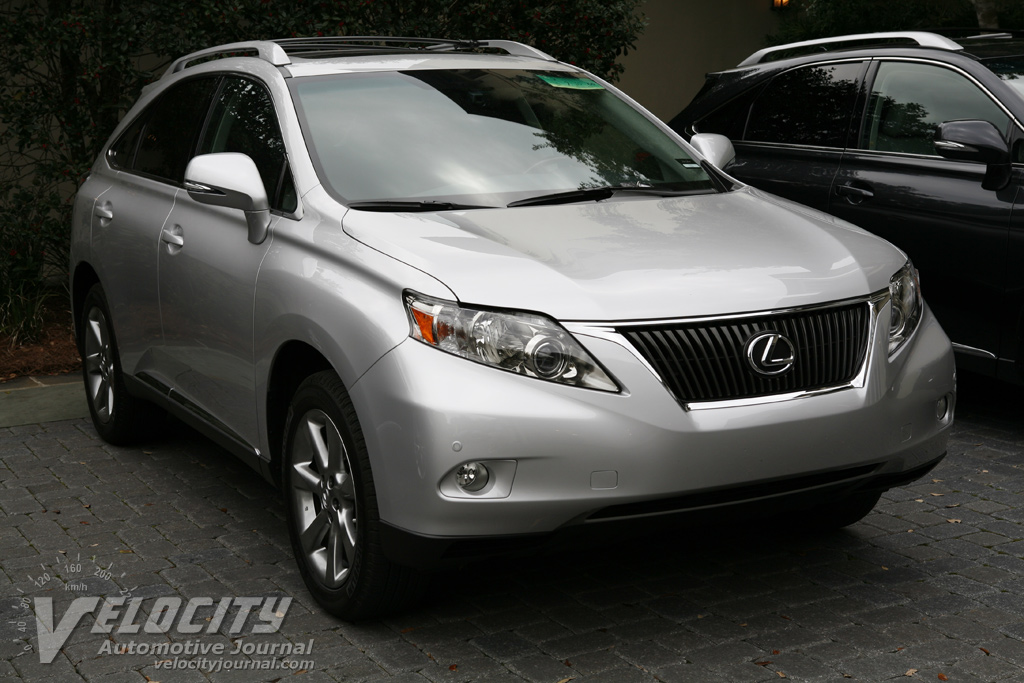
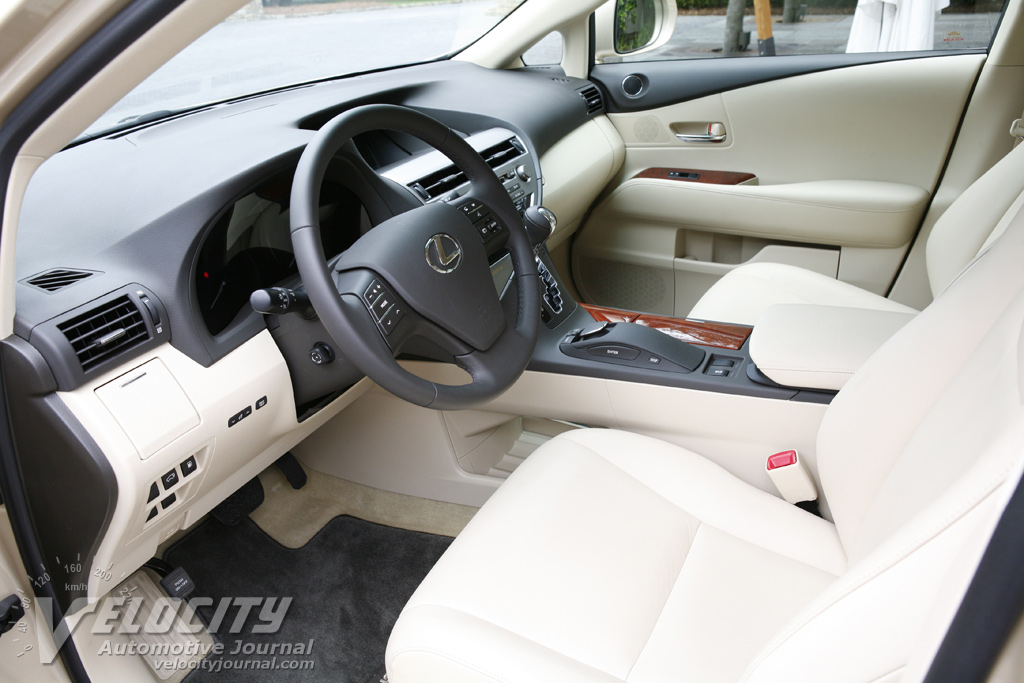
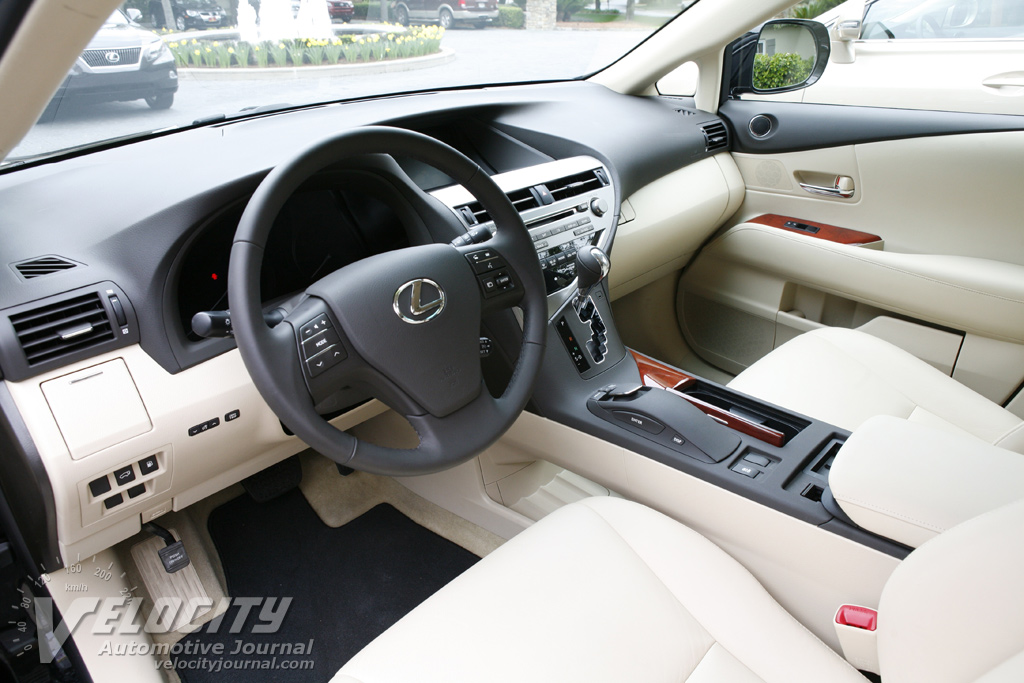






Saturday, April 11, 2009
2010 Toyota Prius - Second Drive
The top-selling hybrid tops 50 mpg.
BY PATRICK BEDARD, PHOTOGRAPHY BY DAVID DEWHURST
May 2009
If the Toyota Prius is about sending messages—and even some owners agree that it is—then this new, third-generation model speaks through a bullhorn. Ignore this if you can: 51 mpg city, 48 highway, and 50 combined for the official EPA mileage ratings.
Fifty mpg! Free hugs at Whole Foods, no limit, while they last.
The big five-oh ekes out a clear margin over the old Prius (48, 45, and 46) and leaves Honda’s new Insight hybrid back in the shadows (40, 43, and 41). Good enough for its position as the “most affordable hybrid,” but no high-fives.
Maybe the saints of old had to flagellate themselves to show their piety, but messaging by Prius is as soothing as silk underwear. Interior space for passengers and cargo is up by five cubic feet, Toyota says, though the car itself is longer and wider by less than an inch each way.
The 2010 model has muscles, too: Acceleration from zero to 60 mph takes 9.8 seconds, says chief engineer Akihiko Otsuka, which would be quicker by 0.3 second than the last Prius we tested.
No more floaty little appliance gliding along the byways, either. The suspension is much tightened, with real anti-roll now and much firmer shock control. The standard-equipment P195/65R-15 tires were quiet on the smooth blacktops we drove near California’s Napa Valley and completely forgiving of the rough stuff. Or you can upgrade to much stiffer P215/45R-17s if you want to feel the road’s cracks and crumbs.
Although the previous model always felt roomier than its exterior dimensions would suggest, the third-generation version adds space where people need it most—more knee clearance in back, thanks to deft shaping of the front buckets, and a looser fit around the hips and shoulders in front. A height adjuster is now standard for the driver’s seat, as is a tilting and telescoping column. Raising the roof over the back seat adds headroom and, together with pushing the bottom of the windshield forward, creates a graceful overhead sweep from front to rear. The wind seems to approve, too, as the drag coefficient drops from 0.26 to 0.25.
The quality of interior padding and coverings has been plushed up, too, eliminating the mood of frugality that infused past versions. The seats feel like quality furniture now, and the abstract textures on the dash and door panels add a contemporary freshness to the interior.
Mechanically, Toyota says that 90 percent of the hybrid system is new for this 2010 model. The engine has been enlarged to 1.8 liters and 98 horsepower compared with 1.5 and 76 before, while combined output is up 24 horsepower to 134. Revs are held much lower over the operating range, with a significant reduction in engine noise. Gone are the drive belts; all accessories are now electric.
Battery output has been upped from 25 kilowatts to 27 without changing the nickel-metal hydride cells; the credit goes to a redesign of the packaging, which saves weight and improves cooling.
Like the Insight, the Prius includes a selection of mode buttons on the center stack to optimize hybrid operation for specific conditions. The EV mode allows engine-off driving at speeds up to 25 mph for up to a mile, Toyota says, depending upon battery charge (0.9 mile at less than 20 mph in our run). Eco mode moderates throttle opening and air-conditioning loads to improve fuel economy at some expense to acceleration. Power mode puts a priority on acceleration, such as when merging onto a freeway, at a cost to mpg.
Those who see a message in every Prius might be surprised at the lack of enviro rah-rah within. While the Ford Fusion grows a vividly colored rain forest in the instrument cluster leaf by leaf, and the Escape and GM hybrids indulge in green gestures, the Prius mostly avoids that cliché. This is a straightforward car, though it has several dash screens devoted to the details of fuel economy. In fact, the new logo for Toyota hybrids is blue.
What message will folks read into that?
Friday, March 27, 2009
VW Golf GTD (2009) first pictures
By Chris Chilton
First official pictures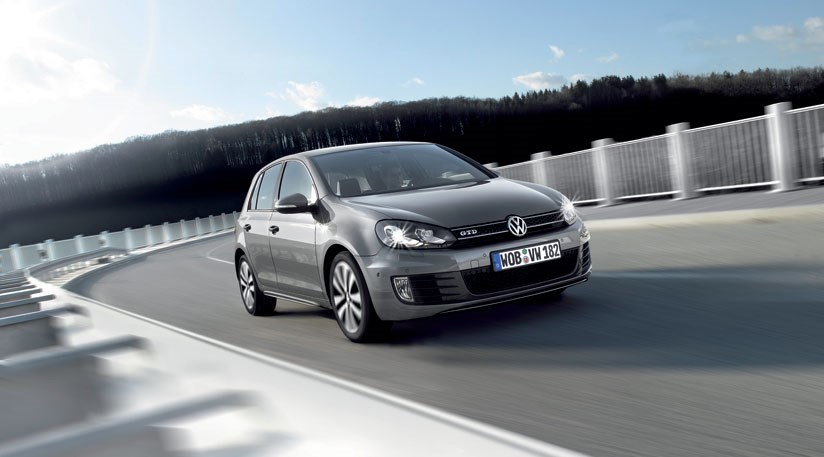
27 March 2009 12:30
Volkswagen UK hasn’t even delivered its first new Golf GTi but is already showing us this: the GTD, its diesel alter ego.
Powered by a 168bhp version of VW’s ubiquitous common rail 2.0-litre turbodiesel four it sprints to 62mph in just 8.1sec compared with 7.1sec for the 207bhp petrol GTi and its 136mph top speed falls 12mph short. But with 256lb ft of torque (the GTi makes do with 207lb ft) on hand, the diesel should have the upper hand in mid-range performance.
And of course there’s the economy advantage. The GTI’s 38mpg and 170g/km is impressive, but the GTD rubbishes it with a 53mpg, 139g/km performance. Three and five door bodies will be available, as will the chance to substitute a DSG transmission for the standard six-speed manual.
It doesn’t get the GTi’s clever ESP-based differential but the chunky-flat bottomed steering wheel and heavily-bolstered sports seats (albeit trimmed in grey- rather than red-tinged tartan) make it across to the GTD.
Outside there are silver flashes on the grille in place of the GTi’s red, the lower bumper is the same but with a smaller blackout section and the twin rear pipes are siamesed rather than located at either side of the car, wheelbarrow style. The standard 17-inch wheels and optional 18s are both different to the GTi’s rims and of course there are GTD badges at either ends too.
Really though, it’s not that different. But on the evidence of these official photographs we’d have to say it looks pretty disappointing, more like an SE with some optional alloys than a hot hatch. A Volkswagen insider assures us that, in the metal, it looks just as punchy as the petrol, however.
The anoraks among you might remember that Volkswagen sold diesel powered GTi look-alikes badged GTD in mainland Europe during the 1980s. A handful made it to the UK but with diesel fever yet to grab the imagination of the performance car buyers and power outputs and refinement levels too poor to persuade them otherwise, they weren’t much competition for the contemporary GTi.
This one, though, looks like it might be, not least since Volkswagen is likely to price it at around £21,000 (a grand under the GTi) when sales start in June.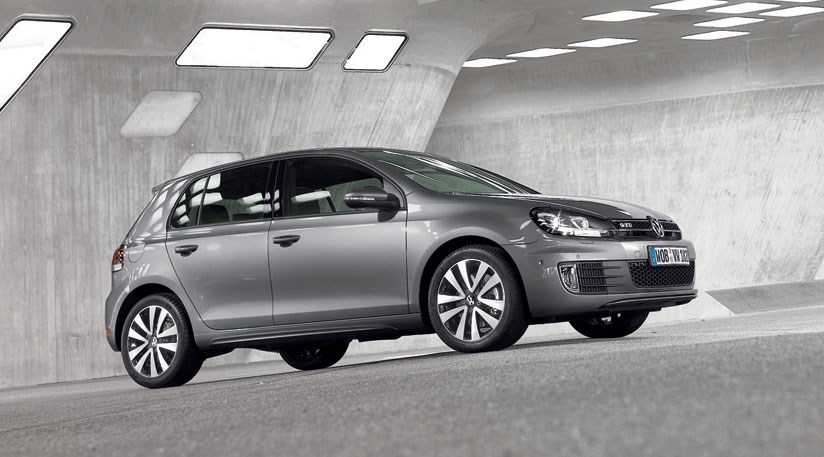
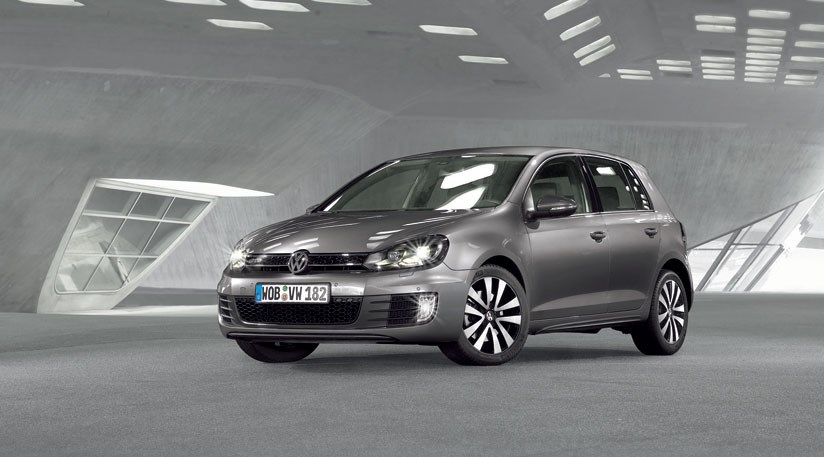
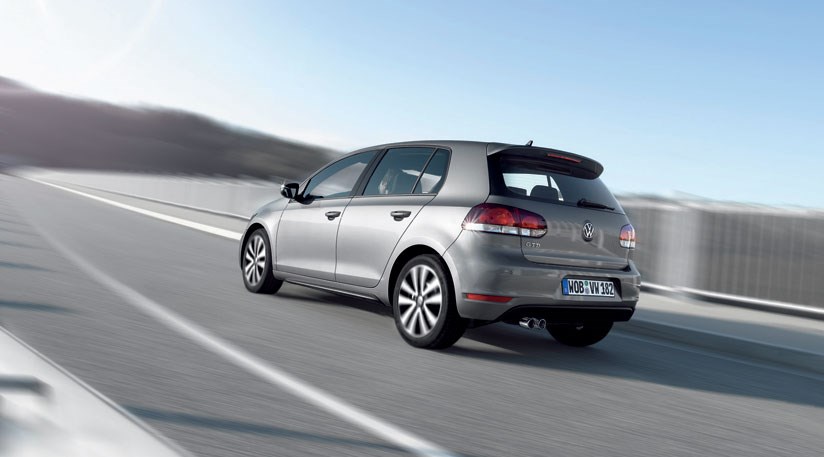
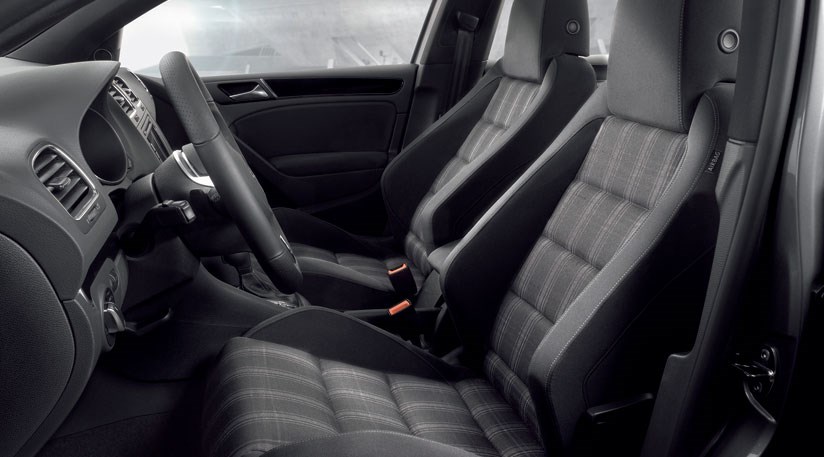
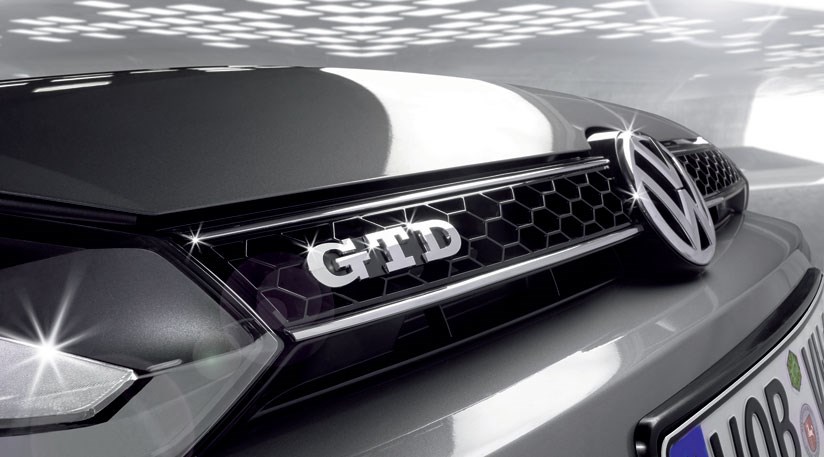
Car Magazine
2009 Toyota Sienna Limited AWD - Short Take Road Test
An all-wheel-drive minivan for those whose only excitement is climatic paranoia.
BY JARED GALL
Vehicles with four driven wheels have about them an aura of romance; the potential for off-road adventures or sideways rally action can have that effect. Minivans, on the other hand, have about them an odor of stale milk and other perks left behind by those occasional consequences of romance: children. Can adding all-wheel drive to a minivan make it a more exciting vehicle?
In a Word?
No.
And Then the Long Version
No Sienna—no minivan this side of the diminutive Mazda 5, for that matter—is what you’d call tossable, nor do they boast the ground clearance necessary for off-road excursions. Minivans aren’t about excitement. They are perhaps the most honest vehicles on the market, holding dear only one function: maximum practicality. No matter who prepares it, the recipe for such versatility is always the same—sufficient interior space to host your next family reunion, far more cup holders than seatbelts, and enough map pockets to get you to Betelgeuse by way of the Horsehead Nebula.
Since that stuff is the same from minivan to minivan, it’s really the features that grab the headlines in the minivan market. Since the birth of the breed, the race to provide the latest and coolest equipment has been a competitive one, and the success of a particular feature has always led to its adoption by every major player in the game. The Sienna, however, remains the only one to offer all-wheel drive. (Others have offered it in the past, but have dropped it from their minivans.)
We’ve long championed the purchase of a good set of winter tires over all-wheel drive. In our own winter-traction testing, the only dynamic arena in which all-wheel drive conclusively outperformed winter tires was straight-line acceleration, particularly uphill. In handling and braking tests—which measure the more important aspects of safe driving, especially in inclement weather—the installation of winter tires on a front-drive vehicle provides better performance.
A Bundle of Compromises
All-wheel drive also comes bundled with a set of compromises winter tires don’t make. Not only is the all-wheel-drive Sienna available strictly in seven-passenger configurations (front-wheel-drive Siennas can be outfitted with up to eight seats), but the extra 240 or so pounds of the all-wheel-drive system combine with a gearing change to drop highway fuel economy from 23 mpg to 21. All-wheel drive also costs anywhere from $2200 to $3200 more (depending on trim level), which would buy a lot of Huggies for the functional family, or separate one-week vacations for a dysfunctional one.
On dry pavement, the all-wheel-drive van returned performance just a bit behind that of the front-wheel-drive Sienna from our last minivan comparison test. Zero to 60 was accomplished in 7.4 seconds and the quarter-mile in 15.8 at 89 mph—still blisteringly quick for a minivan. We don’t normally like vehicles based solely on straight-line speed, but when it comes to minivans, there’s little other excitement to be had.
Handling was likewise down just a bit, at 0.74 g on the skidpad compared to 0.76, and this Sienna bested the comparo van by 23 feet in the 70-mph-to-0 braking test—188 feet to 201. The differences are likely due to the smaller P215/65-16 tires on the Sienna in the comparison test versus P225/60-17 rubber on our AWD tester. The AWD Sienna also had run-flats.
Not so Many Siennas at Track Days
Of course, talking about minivan performance is like rating Ferraris based on their towing capabilities. And so we move on to the important stuff. The Sienna ranks mid-pack in interior space, but leads the charge in cargo volume with 44 cubic feet behind the third row. Comfort in all rows is near the top. However, the interior design is starting to look dated, and the materials seem to be growing cheaper. Of particular concern is the faux-wood trim on the driver’s door pull that creaks and groans like a melting ice shelf any time you touch it—which is every time the door is closed.
We also noted that the second-row right-side seatbelt repeatedly engaged its pretensioner without provocation, forcing the passenger to repeatedly unbuckle, let the seatbelt retract, and buckle back in on long drives. We remember this annoyance from our long-term Sienna in 2004. It doesn’t happen in the other seats because the mountings are different—the problem seatbelt is integrated into the seat for easier third-row access, while the rest are mounted to the pillars.
The engine is strong and quiet, but the transmission in our example seemed prematurely tired, with harsh shifts occurring under a variety of different circumstances and a reluctance to downshift until the van had warmed up. We’re unsure if the latter was simply the transmission’s programming—an attempt to preserve the engine before it was warm—or a more sinister problem.
One Way to Get Picked: Be the Only Choice
As mentioned, people looking for an all-wheel-drive minivan can choose between a Toyota Sienna and a Toyota Sienna. Opt instead for a front-wheel-drive minivan and a set of winter tires, and suddenly your options include every mini on the market. And anyway, reducing the challenge of accelerating up an icy slope will deprive you of the only excitement your minivan may ever offer.
Specifications
VEHICLE TYPE: front-engine, 4-wheel-drive, 7-passenger, 5-door van
PRICE AS TESTED: $40,549 (base price: $38,610)
ENGINE TYPE: DOHC 24-valve V-6 aluminum block and heads, port fuel injection
Displacement: 211 cu in, 3456cc
Power (SAE net): 265 bhp @ 6200 rpm
Torque (SAE net): 245 lb-ft @ 4700 rpm
TRANSMISSION: 5-speed automatic
DIMENSIONS:
Wheelbase: 119.3 in Length: 201.0 in Width: 77.4 in Height: 68.9 in Curb weight: 4623 lb
C/D TEST RESULTS:
Zero to 60 mph: 7.4 sec
Zero to 100 mph: 20.5 sec
Street start, 5–60 mph: 7.7 sec
Standing ¼-mile: 15.8 sec @ 89 mph
Top speed (governor limited): 111 mph
Braking, 70–0 mph: 188 ft
Roadholding, 300-ft-dia skidpad*: 0.74 g
FUEL ECONOMY:
EPA city/highway driving: 16/21 mpg
C/D observed: 17 mpg
*Stability-control-inhibited
Car and Driver

